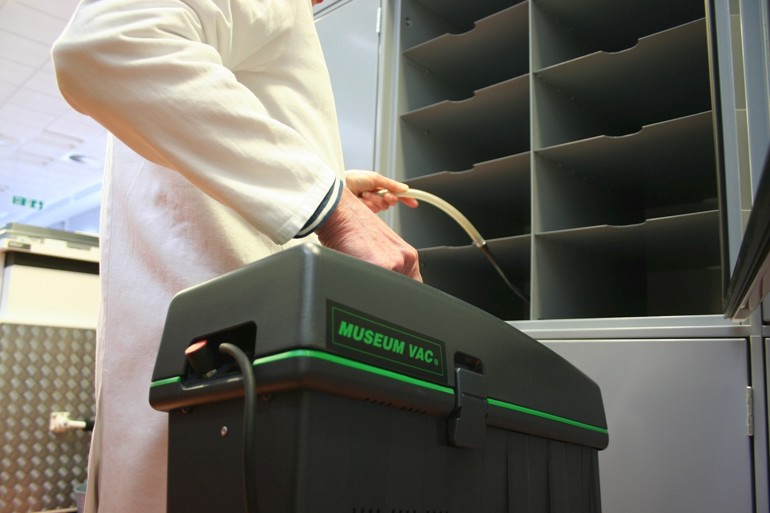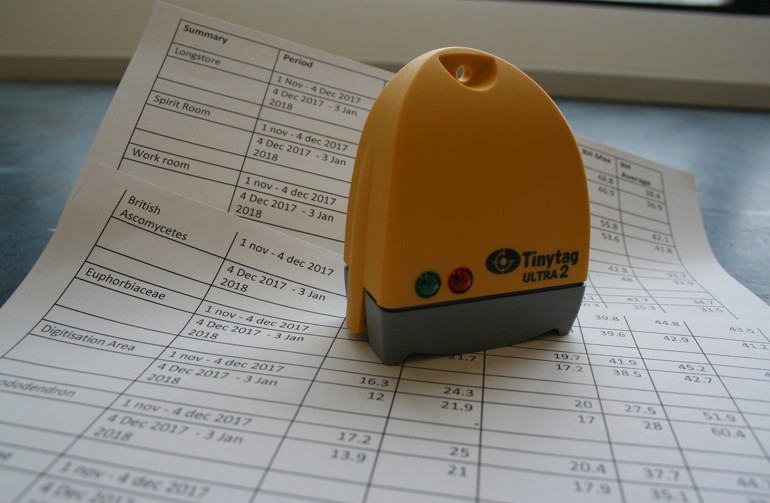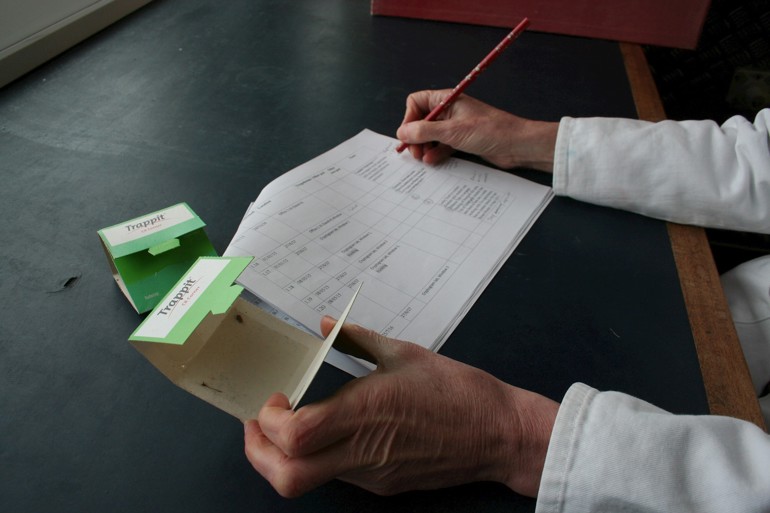Freezing
We freeze all specimens to -29 degrees Celsius for 5 days before they enter the Herbarium. In event of an insect outbreak, we remove specimens from the cabinets and freeze them.
Dead insects and frass (excrement) are removed from specimens, folders and cupboards using a MuseumVac with sealed HEPA filter unit.

A good storage environment
- Maintaining the temperature and humidity of the Herbarium close to 20 degrees and 50% relative humidity helps to discourage insects.
- Our herbarium cabinets are fitted with insect-proof seals.
- We don’t allow food in the Herbarium, and floors and work surfaces are cleaned regularly; if dust and debris builds up it can provide a habitat for insects.

Monitoring
Sticky blunder traps and UV lights are placed on window sills and under workstations around the Herbarium. These are checked by the IPM team every 3 months. The data recorded from inspections allows us to identify insect ‘hotspots’ requiring action or closer monitoring.

Staff training and information
Workshops, displays and information posters are used to encourage research staff and visitors to look for signs of insect infestation and report them to the IPM team.
Herbarium cleaning staff are given training in insect identification, and record and report any insects found.




